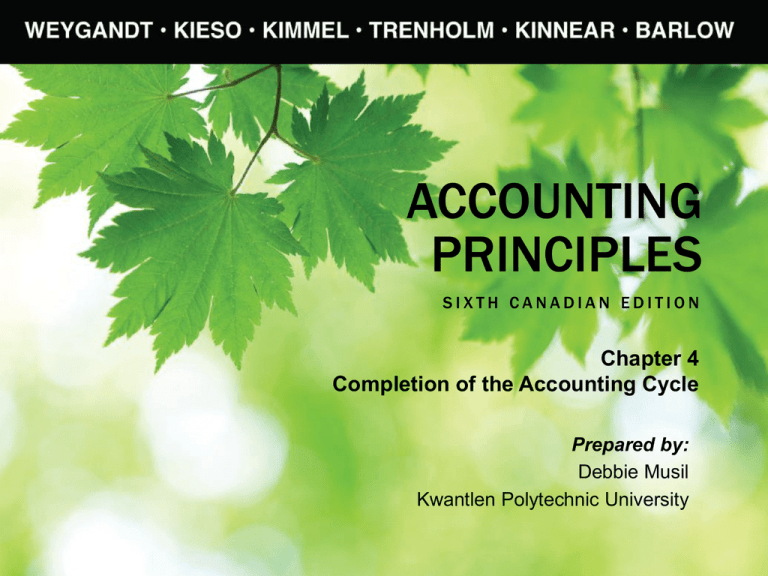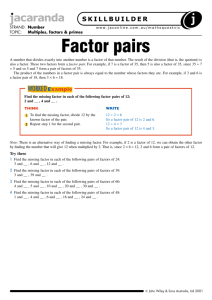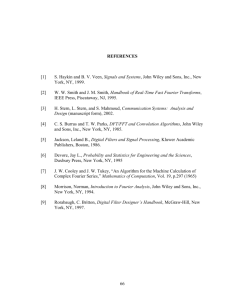
ACCOUNTING
PRINCIPLES
SIXTH CANADIAN EDITION
Chapter 4
Completion of the Accounting Cycle
Prepared by:
Debbie Musil
Kwantlen Polytechnic University
Completion of the Accounting
Cycle
• Closing the books
– Preparing and posting closing entries
– Preparing the post-closing trial balance
• Summary of the accounting cycle
– Worksheets, reversing and correcting entries
• Classified balance sheet
• Using information in the financial
statements
– Working capital and current and acid-test ratios
Copyright John Wiley & Sons Canada, Ltd.
2
CHAPTER 4:
Completion of the Accounting Cycle
LEARNING OBJECTIVES:
1. Prepare closing entries and a post-closing trial
balance.
2. Explain the steps in the accounting cycle including
optional steps.
3. Prepare correcting entries.
4. Prepare a classified balance sheet.
5. Illustrate measures used to evaluate liquidity.
6. Prepare a work sheet (Appendix 4A).
7. Prepare reversing entries (Appendix 4B).
Copyright John Wiley & Sons Canada, Ltd.
3
Closing the Books
• Done at the end of the accounting period
– Accounts are made ready for the next period
• Temporary accounts:
– Only collect data for a single period; closed at
the end of the period
– Revenue, expense and owner’s drawings
accounts
• Permanent accounts:
– Not closed
– Balances are carried forward into next period
– All balance sheet accounts
Copyright John Wiley & Sons Canada, Ltd.
4
Closing Entries
• Transfer temporary account balances to the
owner’s capital account
– Updates the owner’s capital account balance
– Reduces balances in all temporary accounts to
zero, so they are ready for the next period
• Journalizing and posting closing entries are
a required step in the accounting cycle
• Revenue and expense accounts are closed
to Income Summary (a temporary account)
Copyright John Wiley & Sons Canada, Ltd.
5
The Closing Process
Copyright John Wiley & Sons Canada, Ltd.
6
The Closing Process
1. Close revenue accounts
–
–
Debit each revenue account for its balance
Credit Income Summary for total revenues
2. Close expense accounts
–
–
Debit Income Summary for total expenses
Credit each expense account for its balance
3. Close Income Summary
–
–
Debit Income Summary for balance (credit if
loss)
Credit owner’s capital account (debit if loss)
4. Close drawings
–
–
Debit owner’s capital account
Credit owner’s drawings account for the
balance
Copyright John Wiley & Sons Canada, Ltd.
7
Post-Closing Trial Balance
• Prepared after all closing entries have
been journalized and posted
• Provides a list of all permanent
accounts and their balances
– These balances are carried forward into
the next period
– Since all temporary accounts have zero
balances, only permanent accounts
remain
Copyright John Wiley & Sons Canada, Ltd.
8
Post-Closing Trial Balance
Copyright John Wiley & Sons Canada, Ltd.
9
CHAPTER 4:
Completion of the Accounting Cycle
LEARNING OBJECTIVES:
1. Prepare closing entries and a post-closing trial
balance.
2. Explain the steps in the accounting cycle including
optional steps.
3. Prepare correcting entries.
4. Prepare a classified balance sheet.
5. Illustrate measures used to evaluate liquidity.
6. Prepare a work sheet (Appendix 4A).
7. Prepare reversing entries (Appendix 4B).
Copyright John Wiley & Sons Canada, Ltd.
10
Accounting Cycle Summarized
Copyright John Wiley & Sons Canada, Ltd.
11
Work Sheets – An Optional Step
• Multiple-column form to help prepare
adjusting entries and financial
statements
• A working tool - not a permanent
accounting record
• Useful for the preparation of interim
financial information or for internal use
Copyright John Wiley & Sons Canada, Ltd.
12
Reversing Entries – An Optional
Step
• Reversing entries reverse certain
adjusting entries made in the previous
period
– Made at the beginning of the next
accounting period
– To simplify recording of transactions in
future accounting periods
Copyright John Wiley & Sons Canada, Ltd.
13
CHAPTER 4:
Completion of the Accounting Cycle
LEARNING OBJECTIVES:
1. Prepare closing entries and a post-closing trial
balance.
2. Explain the steps in the accounting cycle including
optional steps.
3. Prepare correcting entries.
4. Prepare a classified balance sheet.
5. Illustrate measures used to evaluate liquidity.
6. Prepare a work sheet (Appendix 4A).
7. Prepare reversing entries (Appendix 4B).
Copyright John Wiley & Sons Canada, Ltd.
Correcting Entries – An
Avoidable Step
• Correcting entries correct errors that
have occurred in the recording process
– Unnecessary if the records are free of
errors
– Can be journalized and posted whenever
an error is discovered
– Must be done before closing entries are
prepared and posted
Copyright John Wiley & Sons Canada, Ltd.
15
CHAPTER 4:
Completion of the Accounting Cycle
LEARNING OBJECTIVES:
1. Prepare closing entries and a post-closing trial
balance.
2. Explain the steps in the accounting cycle including
optional steps.
3. Prepare correcting entries.
4. Prepare a classified balance sheet.
5. Illustrate measures used to evaluate liquidity.
6. Prepare a work sheet (Appendix 4A).
7. Prepare reversing entries (Appendix 4B).
Copyright John Wiley & Sons Canada, Ltd.
Classified Balance Sheet
• Financial statements are more useful
when similar assets and liabilities are
grouped together
• A classified balance sheet generally has
the following standard classifications:
Copyright John Wiley & Sons Canada, Ltd.
17
Current Assets
• Cash and other resources that will be
converted to cash, sold or used up in
one year from the balance sheet date
• Can be longer period if operating
cycle is greater than one year
• Listed in order of liquidity
• Examples:
– Cash, short-term investments, accounts
receivable, inventory, prepaid expenses
Copyright John Wiley & Sons Canada, Ltd.
18
Operating Cycle
• The length of it takes from starting with cash to
ending with cash in producing revenues
• Usually less than one year, but for some
companies it may be longer than one year
Copyright John Wiley & Sons Canada, Ltd.
19
Long-Term Investments
• Investments in debt or equity that are
expected to be held for many years
• Not readily marketable or expected to
be converted into cash within one
year
• Examples:
– Investments in shares or bonds of
another company, investment in land
held for resale
Copyright John Wiley & Sons Canada, Ltd.
20
Property, Plant and
Equipment
• Long-lived tangible assets that are
used in the business and not intended
for sale
• Examples:
– Land, buildings, equipment
Copyright John Wiley & Sons Canada, Ltd.
21
Intangible Assets
• Long-lived assets that do not have
physical substance
• Examples:
– Patents, copyrights, trademarks, trade
names, licences
• Goodwill is a type of intangible asset
– Arises when a company is acquired at a
price greater than the fair value of the
assets
Copyright John Wiley & Sons Canada, Ltd.
22
Current Liabilities
• Obligations expected to be settled within
one year from the balance sheet date or in
the normal operating cycle
• Listed first in the liabilities and equity
section of the balance sheet
• Listed in order of liquidity
• Examples:
– Accounts payable, interest payable, salaries
payable, unearned revenue, current maturities
of long-term debt
Copyright John Wiley & Sons Canada, Ltd.
23
Non-current Liabilities
• Obligations expected to be paid after
one year or longer
• Examples:
– Long-term notes payable, bonds
payable, mortgages payable, lease
liabilities, deferred income taxes (or
future income taxes)
Copyright John Wiley & Sons Canada, Ltd.
24
Equity
• Content of the equity section varies
with the form of business organization:
– Proprietorship: one capital account under
the heading “Owner’s Equity”
– Partnership: Capital account for each
partner under the heading “Partners’
Equity”
– Corporation: shareholders’ equity
consists of two sections: “Share Capital”
and “Retained Earnings”
Copyright John Wiley & Sons Canada, Ltd.
25
IFRS Versus ASPE
• Statement Name
– IFRS: Statement of Financial Position
– ASPE: Balance Sheet
– But both allow either name
• Order of Items
– IFRS: May present assets, liabilities,
equity in reverse order of liquidity
– ASPE: typically uses order of liquidity
IFRS Versus ASPE 2
• Classification of Assets
– Long-term investments, property, plant
and equipment, intangible assets
– IFRS: May use sub-heading “NonCurrent Assets”
– ASPE: does not use this sub-heading,
uses the separate classifications
CHAPTER 4:
Completion of the Accounting Cycle
LEARNING OBJECTIVES:
1. Prepare closing entries and a post-closing trial
balance.
2. Explain the steps in the accounting cycle including
optional steps.
3. Prepare correcting entries.
4. Prepare a classified balance sheet.
5. Illustrate measures used to evaluate liquidity.
6. Prepare a work sheet (Appendix 4A).
7. Prepare reversing entries (Appendix 4B).
Copyright John Wiley & Sons Canada, Ltd.
Using Information in the
Financial Statements
• Liquidity: the ability to pay obligations
as they come due within the next year
• Working capital: an important
measure of liquidity
= Current assets - Current liabilities
Copyright John Wiley & Sons Canada, Ltd.
29
Using Information in the
Financial Statements
(Continued)
• Current ratio: a measure of short-term
debt-paying ability
= Current assets ÷ Current liabilities
• Acid-test ratio: measures immediate
short-term liquidity
={Cash + Short-term investments +
Receivables} ÷ Current liabilities
Copyright John Wiley & Sons Canada, Ltd.
30
CHAPTER 4:
Completion of the Accounting Cycle
LEARNING OBJECTIVES:
1. Prepare closing entries and a post-closing trial
balance.
2. Explain the steps in the accounting cycle including
optional steps.
3. Prepare correcting entries.
4. Prepare a classified balance sheet.
5. Illustrate measures used to evaluate liquidity.
6. Prepare a work sheet (Appendix 4A).
7. Prepare reversing entries (Appendix 4B).
Copyright John Wiley & Sons Canada, Ltd.
Appendix 4A: Work Sheets
• A multiple-column form used in preparing
financial statements
• Steps in preparing a work sheet:
1. Prepare a trial balance on the work sheet
2. Enter adjustments in the adjustment columns
3. Enter adjusted balances in the adjusted trial
balance columns
4. Enter adjusted trial balance amounts in the
correct financial statement columns
5. Total columns, calculate profit (loss) and
complete the work sheet
Copyright John Wiley & Sons Canada, Ltd.
32
CHAPTER 4:
Completion of the Accounting Cycle
LEARNING OBJECTIVES:
1. Prepare closing entries and a post-closing trial
balance.
2. Explain the steps in the accounting cycle including
optional steps.
3. Prepare correcting entries.
4. Prepare a classified balance sheet.
5. Illustrate measures used to evaluate liquidity.
6. Prepare a work sheet (Appendix 4A).
7. Prepare reversing entries (Appendix 4B).
Copyright John Wiley & Sons Canada, Ltd.
Appendix 4B: Reversing
Entries
• Entries that reverse the adjusting entries at
the beginning of the next period
– Used to reverse accrued revenues and
expenses
• Simplifies the recording of future
transactions related to an adjusting entry
– When transaction is recorded, no need to refer
back to adjusting entries to determine how
much relates to prior period
Copyright John Wiley & Sons Canada, Ltd.
34
Copyright
Copyright © 2013 John Wiley & Sons Canada, Ltd. All rights
reserved. Reproduction or translation of this work beyond
that permitted by Access Copyright (the Canadian copyright
licensing agency) is unlawful. Requests for further
information should be addressed to the Permissions
Department, John Wiley & Sons Canada, Ltd. The purchaser
may make back-up copies for his or her own use only and
not for distribution or resale. The author and the publisher
assume no responsibility for errors, omissions, or damages
caused by the use of these files or programs or from the use
of the information contained herein.
Prepared by:
A. Davis, MSc, BComm, CA, CFE
Copyright John Wiley & Sons
Canada, Ltd.
35



